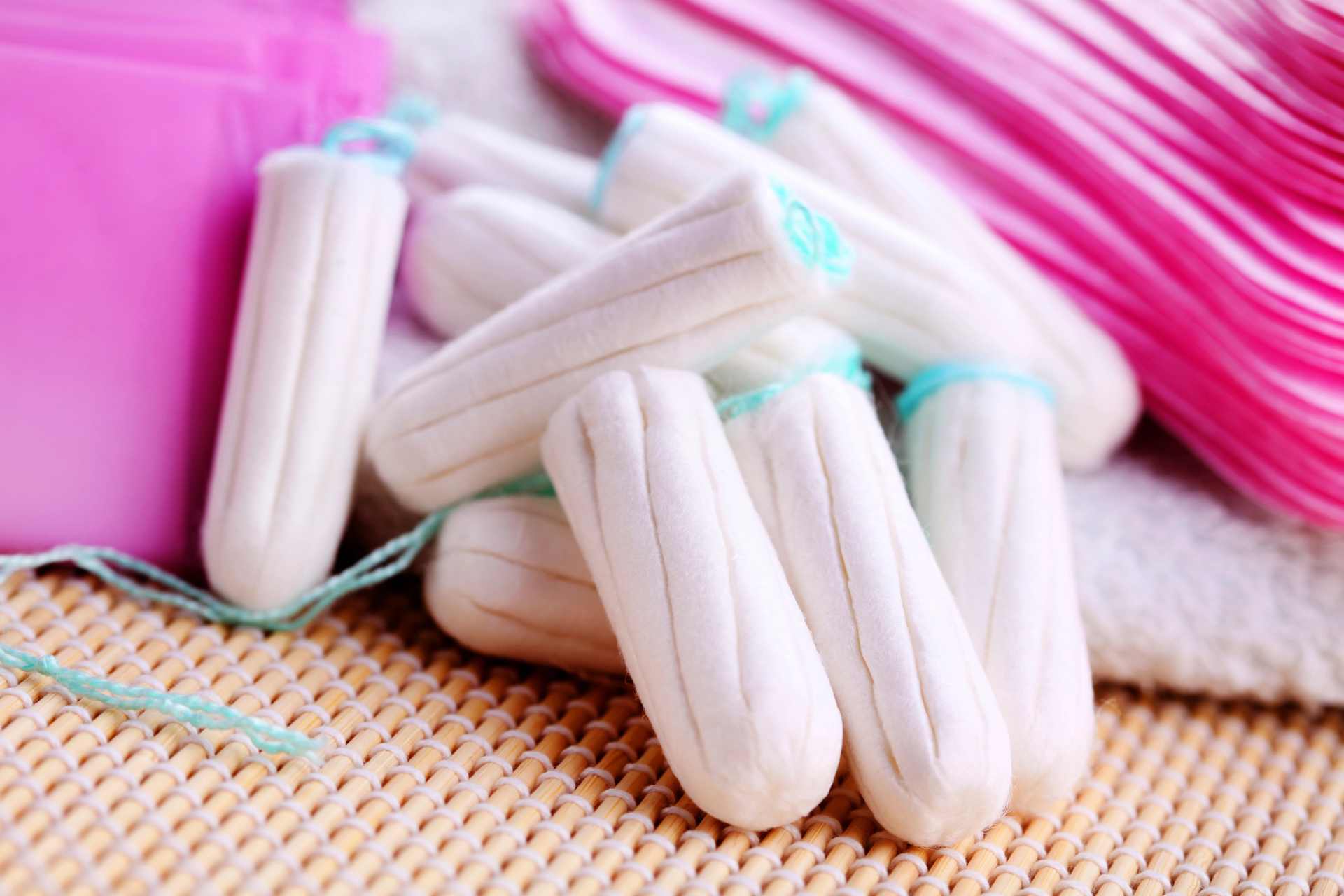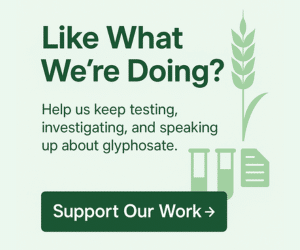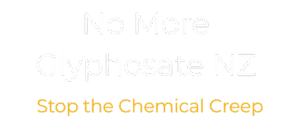Most people associate glyphosate with agriculture. Sprayed on crops. Tracked into food. Residues on our plates.
But what if the bigger picture isn’t on your plate at all?
Following on from yesterday’s article—We Think About What We Eat — But What About What We Wear?—we continue our look at the unexpected places glyphosate may be hiding.
From tampons to toothpaste, supplements to sheets, glyphosate has a way of showing up where you’d least expect it—and most people have no idea it’s even there.
Unlike food, which is occasionally tested, glyphosate in personal care, textiles, and wellness products often goes entirely unchecked.
This isn’t just a story about food safety anymore.
It’s a story about everyday exposure.
The Growing List of Glyphosate-Contaminated Products
According to The Detox Project, the market for Glyphosate Residue Free (GRF) certification has now reached USD $800 million—and not just for food.
Certified products now include:
- Vitamins and supplements
- Pet food
- Cosmetics and skincare
- Feminine hygiene products
- Baby formula
- Cotton clothing and textiles
Why? Because glyphosate contamination has been found in all of these.
And the more scientists test, the more they find.
Tampons, Toothpaste, and More: The Exposure No One Warned You About
Let’s take a closer look:
- Tampons and sanitary pads have tested positive for glyphosate, likely due to cotton sprayed during production. One 2016 study found residues in 85% of U.S. cotton-based feminine hygiene products.
Read more about that here: Glyphosate in Tampons - Multivitamins and supplements—including those marketed as “natural”—have shown glyphosate contamination in independent testing. Residues can enter through herbal ingredients, binding agents, or crop-derived fillers.
- Cotton clothing and bed linen, especially when sourced from glyphosate-sprayed crops, may carry trace residues. Although dermal absorption is lower than oral exposure, it still raises questions—especially for infants, those with skin conditions, or people sweating during sleep or exercise. Read more: Is Glyphosate in Your Clothes?
- Toothpaste and mouthwash made with herbal extracts or sweeteners derived from glyphosate-treated crops could pose yet another pathway.
And let’s not forget pet food, protein powders, baby products, and skin creams.
While definitive peer-reviewed studies are still limited, concerns are growing that glyphosate could be present in skincare and personal care products—especially those using plant-based ingredients from glyphosate-treated crops.
This is exposure by stealth.
Through trust. Through routine. Through the things we use without a second thought.
Why It’s So Hard to Know What You’re Absorbing
Regulatory frameworks are decades behind. Most countries—including New Zealand—don’t require companies to test for glyphosate in personal care products, textiles, or supplements. Labels don’t tell the full story. Testing is rare. Transparency is optional.
And glyphosate is just one of many unmonitored contaminants.
If we don’t test, how do we know what we’re absorbing?
At No More Glyphosate NZ, we believe consumers have a right to know—not just what’s in their food, but what’s in their homes, their clothes, their supplements, and their children’s products.
This isn’t about panic. It’s about informed choice.
Why We Need Testing Beyond Food
The growth of Glyphosate Residue Free certification is no accident. It’s a response to this growing, unspoken question:
If glyphosate is showing up in unexpected places, how can I protect myself and my family?
The answer starts with testing. But it doesn’t stop there.
It also means:
- Demanding greater transparency from brands
- Supporting companies that go glyphosate-free voluntarily
- Pushing for stronger testing requirements across all product categories—not just food
- Helping shift consumer culture from assumption to accountability
Because “clean” shouldn’t just be a marketing word. It should be provable.
Glyphosate Exposure: It’s Bigger Than We Thought
You might be checking your food—but are you thinking about your face cream, your vitamins, your sheets?
Until testing becomes the norm, the only defense we have is awareness—and pressure. We need to ask the uncomfortable questions, support brands that test and certify, and stop pretending that exposure ends with what’s on our plate.
At No More Glyphosate NZ, we’re expanding our mission beyond food testing. Because glyphosate isn’t staying in the fields—and neither should our concern.
Resources & References
We don’t expect glyphosate in our tampons, vitamins, or face creams—but that doesn’t mean it isn’t there.
The science is still catching up, but consumer testing, regulatory reports, and advocacy efforts are beginning to expose just how far this chemical has spread beyond the farm. Here’s a selection of sources that expand on the evidence, raise questions regulators haven’t answered, and highlight the growing demand for transparency across all product categories—not just food.
The Detox Project – Glyphosate Residue Free Certification Market Update
Details rapid growth of GRF certification across food, textiles, cosmetics, and more.
Glyphosate in Tampons: What You Didn’t Know You Were Absorbing
An in-depth look at glyphosate in feminine hygiene products and what it means for women’s health.
MPI’s Missing Data: Why We Can’t Trust the Glyphosate Reassurance
Explores why New Zealand’s glyphosate safety claims don’t hold up under scrutiny—especially when testing is so limited.
Glyphosate in tampons? No indication of residues of any health significance
Bundesinstitut für Risikobewertung (BfR)
In multiple series of tests (Germany, Switzerland, Sweden, France), tampon samples showed no detectable glyphosate or AMPA residues above detection limits (~10 µg/kg cotton) under worst‑case assumptions.
What’s clear from these resources is that glyphosate exposure isn’t just a dietary issue—it’s a lifestyle issue. And right now, consumers are navigating it largely in the dark.
Testing, certification, and labeling aren’t just bureaucratic boxes to tick. They’re the only real tools we have to reclaim control over what we absorb, inhale, eat, and apply to our skin. The sooner we treat that seriously, the sooner the industry will have to as well.
Note: peer‑reviewed data on glyphosate in face creams is currently lacking; the mention in this article reflects concern based on analogous exposures.
Image Source & Attribution
We’re grateful to the talented photographers and designers whose work enhances our content. The feature image on this page is by matka_Wariatka.




